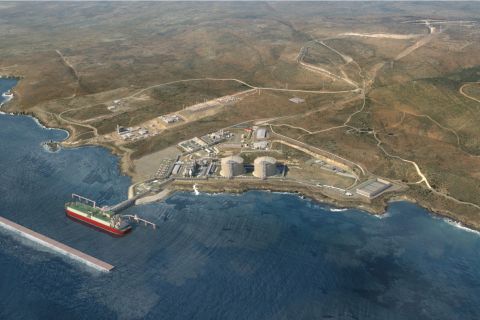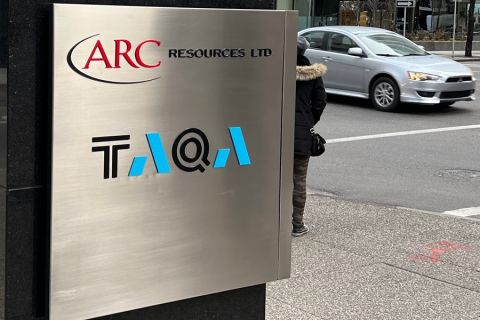Northern Oil and Gas Inc. (NOG) has significantly boosted its position in the Permian Basin in 2022.
Just since August, NOG announced acquisitions totaling roughly $727.5 million of nonoperating interest in the Permian Basin. Most recently, the company continued its A&D tear in the Permian with an agreement to acquire working interest in the Mascot Project in the Midland Basin for $330 million in cash.
NOG CEO Nick O’Grady and President Adam Dirlam spoke with Hart Energy at the A&D Strategies and Opportunities Conference in Dallas about the company’s recent acquisition streak in the Permian Basin and whether it was time to slow down yet.
Darren Barbee: I saw an analyst report that was talking about the recent acquisition NOG made with the Mascot Project and one of the things they mentioned was maybe this will be a time where Northern Oil and Gas will slow down and kind of digest what they’ve purchased. Do you agree with that sentiment or do you have more on the drawing board?
Nick O’Grady (00:41): I do. I mean, I think we’re opportunistic. So, I mentioned this in our speech, but it’s our fiduciary responsibility to take everything as it comes in the door. But I do think just from an organizational perspective, we definitely want to see these things closed through late this year and next year. Adam, you want to add to that?
Adam Dirlam (01:00): Yeah, when you think about everything that’s out there, the opportunity set, these three were all coming kind of at the same time, I think we would’ve been happy with one, two. And the ability to actually get all three done was not something that was necessarily expected just given the conversion rate. So, we’ll take the time to integrate the assets and continue to see what comes to market.
DB: I did notice that also there’s a small midstream component to that deal. Is that something you guys have done in the past and why was it important to do it in this deal?
NO (01:38): Typically it’s an excluded asset. In this case, it’s really a fully integrated project. So, they’ve spent, I think, about 80 million in total on the gathering and treating facilities. And it’s fully built out from a tank battery perspective. And since we’re buying all the leasehold in the project, it’s a sort of one-and-done. I wouldn’t say that’s typical.
AD (01:59): Yeah, I think partnering with the operator, wanted to make sure that we maintained alignment and so it was an undivided interest in effectively the entire project.
NO (02:08): And it certainly ensures that whatever costs the project bears there is 100% alignment.
DB: When we talked back in June, you and I were talking about the potential for you to spend up to $900 million and you said, “I think the likelihood is low.” Actually, I worked it out, you’re at $897 million for this year.
NO (02:30): Done the same math.
AD (02:33): Three more to go.
DB: Do you still think next year you’re going to, because you told me you’re really looking at building as you go along and building that scale, your acquisitions budget is going to get bigger. You said in June, maybe $950 million next year. Do you see maybe a little bit more than that?
NO (02:51): I would say that there’s a difference between capacity and opportunity. I think the capacity will certainly be there and as we are larger and as our leverage stays in check and we continue to generate more cash, that capacity will keep increasing. That’s one of the great benefits of scale.
When I started at NOG, we had done a $52 million acquisition, which was five times larger than the company had ever done. And now I think that represents the smallest one we’ve really done up scale in the last four and a half years. And so, as you get bigger, it obviously begets bigger deals.
That being said, it’s impossible to tell because in the first six months of this, as usual, there were a ton of transactions in the market and frankly, very few of them were interesting to us. They come in and the quality can vary.
I think a lot of it has to do with oil prices. I think, low oil prices, it’s very unlikely you’re going to see a lot of high-quality assets come to market because good assets only come when prices are good from the seller’s perspective.
And so, I think a lot of it’s going to be dependent. The capacity is certainly there, the mental horsepower’s another question, but I think we’ll take some time here and then we’ll be rejuvenating and ready to go.
DB: Yes, you guys need a vacation maybe?
NO (04:04): Yeah.
DB: Well, you get the holidays coming up.
And then the other thing that was interesting to me from your presentation today was these various sellers coming to you, really.
NO (04:15): Yeah.
DB: And can you talk about how you’ve built those relationships because they clearly have become an important part of your model?
NO (04:23): Yeah, I think that’s Adam's purview.
AD (04:23): I mean, you can do a bad deal once. And so we try to approach everything with a level of reason and we try to keep things equitable and maintain alignment. And it goes without saying that as we’ve done more and more deals, it’s a small world out there, and so people talk. And so, we obviously have our proactive reach-out programs, those types of things. But as we continue to set the market and get things done, we’ve got more and more folks coming to us with opportunities. So, continues to kind of snowball on itself.
DB: Right. The other thing, Nick, when you and I talked to in June, one of the things you mentioned was when you look at the Permian, you see the best of the best, and the worst of the worst. And that quote kind of stuck with me, but you also mentioned on stage this idea that you’ve got a team that really studied before you acted.
What’s your level of comfort now with your technical team in terms of selecting the right asset, truly understanding the rock, truly understanding the economics?
NO (05:27): Yeah, I think it’s easy when you buy a really good asset out of the gates and you can build upon that. So, I think your technical knowledge, especially in the Lea and Eddy County footprint that we really started with, it’s very easy for us to underwrite that and know, and we’ve figured out the areas where you want to be.
I think when I say the best of the best and the worst and the worst is that the Delaware Basin is large and there are parts in the south and the west that are poor, a lot of them, even within counties like a Reeves County, there are some great spots and some really tough spots.
And so, we’ve found that you can’t really price, or engineer lower, quality assets. Meaning you can underwrite them for the same return, but the risks associated with those assets from a shock in pricing or operator behavior, ultimately the best assets tend to get developed in a linear and consistent fashion.
And the second-tier assets can be more herky-jerky and you have a lot more underwriting risk and commodity price risk in those things. And so, where I’d tell you is that if you asked our engineering team, they’re sort of the never-satisfied type. I think we still feel like we have tons of work to do to delineate and build out those things.
But we really started this in the fall of 2018 and it was a long time of watching, to the point where some of the operators shopping those things to us were getting very frustrated with us because we kept looking and not buying.
But some of that too was that the market has done that for us, the delineation that’s gone on in the last few years, the shock of the pandemic to force people into actually making money as opposed to just capturing a resource, has made a market that we find ourselves very competitive in. But I don’t know, you want to add from a data perspective?
AD (07:12): Yeah, I mean I think it’s just continuous look-backs and understanding what the dynamic in the market is, right? So we’re in an inflationary market right now. Who are the operators that have more of a propensity to overrun, right? Cause you can get your EURs right, but your rate of return might be way off. And so, it’s continuing to assess what the macro is, but then also being able to boil it down on an operator-by-operator basis.
Recommended Reading
WTI Delivered to East Houston Hits Highest Premium in Nearly Three Years
2024-05-01 - Oil takeaway capacity from the Permian Basin will tighten next month due to scheduled pipeline maintenance.
CPS Closes $785MM Deal for Talen Energy’s Texas NatGas Plants
2024-05-01 - CPS Energy has acquired all assets associated with the 897-MW Barney Davis and 635-MW Nueces Bay natural gas plants in Corpus Christi, Texas, and the 178-MW natural gas plant in Laredo, Texas.
Repsol Plans to Double Oil Production in Venezuela
2024-05-01 - Spain’s Repsol plans to double its oil production in Venezuela and continue with its diluent swap agreements with the OPEC country as approved by the U.S. government.
Permian Gas Finds Another Way to Asia
2024-04-30 - A crop of Mexican LNG facilities in development will connect U.S. producers to high-demand markets while avoiding the Panama Canal.
ARC Resources Adds Ex-Chevron Gas Chief to Board, Tallies Divestments
2024-02-11 - Montney Shale producer ARC Resources aims to sign up to 25% of its 1.38 Bcf/d of gas output to long-term LNG contracts for higher-priced sales overseas.





